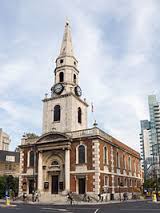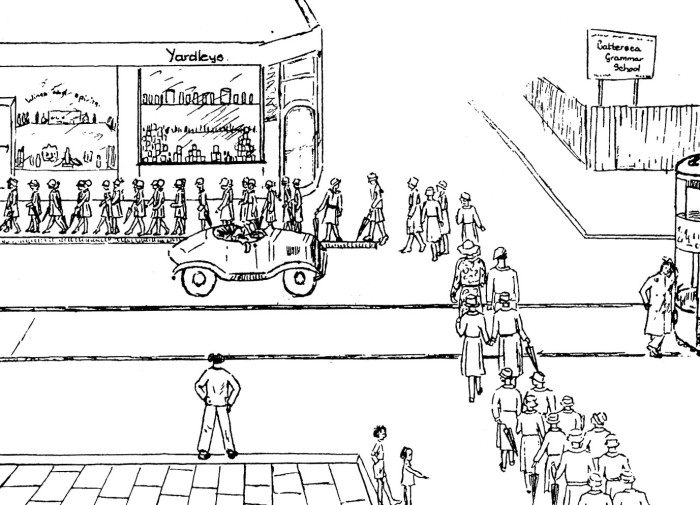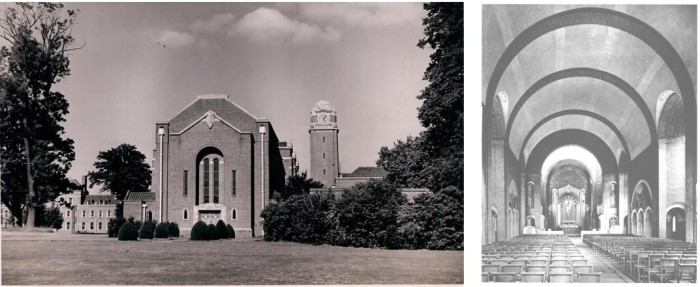Religious services have been a part of the School’s history since its inception.
Rule 20: That the Matron attend the children to Church every Sunday morning and afternoon, and on Good Friday, Christmas Day, and the Anniversary, that they learn the Collect for the Day, and such as are capable to read a portion of Scripture every Sunday Evening … and on every Friday the children be taught the Catechism.
(The mention of Good Friday and Christmas Day are reminders that for a considerable period of the School’s history, there were no school holidays. At all.)
But this posting is less about religion and more about the participants in it; less spiritual and more about practicalities. It’s about getting there and sitting still during. The first three school sites did not have a place of worship attached to them. The girls were taken to a local church – twice – on Sundays. To begin with, they had their own pew. To save the mental gymnastics of trying to work out how huge numbers (current school roll 900+) fitted into one pew, in the early days the numbers were significantly fewer. In 1788, fifteen little girls and a Matron might fit fairly comfortably into a large pew, which cost £3 per annum. This cost, incidentally, can be compared with the £24 pa for ‘Books, Sope, Mops, Brooms &c’.
The first church they attended was the Bethel Chapel initially in a pew donated by Jacob Leroux. The Gentleman’s Magazine in 1813 referring to Seymour Street in Somers Town said
“In this street was formerly a chapel of ease to St. Pancras. It was a gloomy building, erected in 1787, and called Bethel Chapel; it afterwards belonged to the Baptists.”
Cited in Edward Walford, ‘Somers Town and Euston Square’, in Old and New London: Volume 5 (London, 1878), pp. 340-355. British History Online http://www.british-history.ac.uk/old-new-london/vol5/pp340-355 [accessed 16 November 2016].
There was also St. Mary’s Episcopal Chapel in the same street which may have been used too as may have the old church of St Pancras (the new one was not built until 1819 by which time the School was south of the river.)

Image of St Mary’s by Steve F, CC BY-SA 2.0, https://commons.wikimedia.org/w/index.php?curid=11433686
Image of Old St Pancras by Stephen McKay, CC BY-SA 2.0, https://commons.wikimedia.org/w/index.php?curid=13429363
In 1795, the School moved to St George’s Fields, Southwark and the girls would have attended the church of St George the Martyr.

Image of St George by Carlos Delgado, CC BY-SA 3.0, https://commons.wikimedia.org/w/index.php?curid=17840016
The School had its home in Southwark from 1795 to 1852 when it moved to Clapham. St John’s, St Mary’s, St Peter’s and St Paul’s were all used at different times by the School.

Image of St Mary by Derek Harper, CC BY-SA 2.0, https://commons.wikimedia.org/w/index.php?curid=6088418
Image of St Paul from http://www.southwark.anglican.org/find-a-church/battersea/battersea-st-peter-and-st-paul/battersea-st-paul
St Mary’s is the oldest church of these being finished in 1777; St John’s (there is no extant image) was described, rather unflatteringly, as “ ‘A cheap brick church erected for the workers of the factory district of York Road’ according to J.G. Taylor (Our Lady of Batersey, 1925).” www.southwark.anglican.org/downloads/lostchurches/BAT11.pdf It was consecrated in 1863 so was only marginally newer than the 3rd school site. Later amalgamated with St Paul’s, it was badly damaged during WWII and demolished in about 1950. St Peter’s was built in 1875 and St Paul’s, originally a chapel of ease for St John’s, was amalgamated with St Peter’s in 1939.
By the time the School was in Clapham (or Battersea, or Wandsworth or Putney – take your pick: all can arguably claim to be the geographical place of the School’s third site), it had a considerably enlarged school roll. Now, walking to church was not just a marshalling of 20-50 girls in a relatively straight line but manoeuvring nearly 400 girls, in twos, in Sunday best. Pity the tram driver and the hapless motorist who stopped to allow the girls to cross the road!

Mention of Sunday best raises that other set of items known variously by the euphemisms unmentionables, unwhisperables, indescribables and underpinnings: the underwear, usually in the form of combinations comprising bodice, drawers and slip. These garments were generally regarded with loathing. Summer ones were made of cotton but winter ones were made of wool which one former pupil recalled “had the consistency of steel wool” and which “itched and prickled” in a most uncomfortable fashion. Being forced to sit still and attend the sermon was made much more difficult by these garments, issued fresh on a Sunday morning – and therefore at their most like a coarse hair shirt – presumably on a basis of cleanliness is next to Godliness. Clearly the constant fidgeting of the girls reached the attention of the Chaplain and ultimately he came to speak to Miss Mason, the Matron, about the matter. Quite what was said, in what sort of language (given the deemed delicacy of ever mentioning such things) and with what degree of mutual embarrassment is lost to history as the conversation was, literally, behind closed doors. The outcome, however, is known. From then on, the fresh ‘linen’ was distributed on a Monday rather than Sunday so it had become slightly more comfortable by the time it was necessary to attend to the sermon again. Modern girls are at this point dissolving into horrified hysteria at the realisation that only one set of underwear was issued per week … Victorian sensibilities were indeed different!
Once the School moved to Rickmansworth in 1934, the walks to and from the local churches were no longer part of Sunday life. Services, as today, took place in the Chapel.

The Junior girls, still at this stage in Weybridge, continued to perambulate to their local church, St James.

Image from http://www.stjamesweybridge.org.uk/
After the service, the girls would write little essays about the sermon and the vicar would award gold and silver stars for the best. Before they departed the School to reach the Church, the girls would be given a penny to put in the collection. One week, a girl put her coat button in instead so that she could put her penny in the bubble gum machine they passed en route. Something went wrong with the mechanism and her sin was rewarded not with one but several – perhaps a case of the wages of sin being not death but illicit chewing gum. Of course, her behaviour did not go unpunished but the vicar’s essays may have been a little odd that week! Even without bubble gum, attention was not always focused on the service. Although girls recall different things about their church visits – such as the choir processional, the occasional use of incense and the bell ringers – one former pupil, under the mistaken view that the memorial plaques on the walls were vertical gravestones, spent a considerable part of her time trying to puzzle out where the bodies were.
A requirement for religious services throughout the School’s history there may have been, but it is probably fair to say that it did not always guarantee the girls’ focus. Although the steel wool underwear is no longer a reason for a lack of attention …